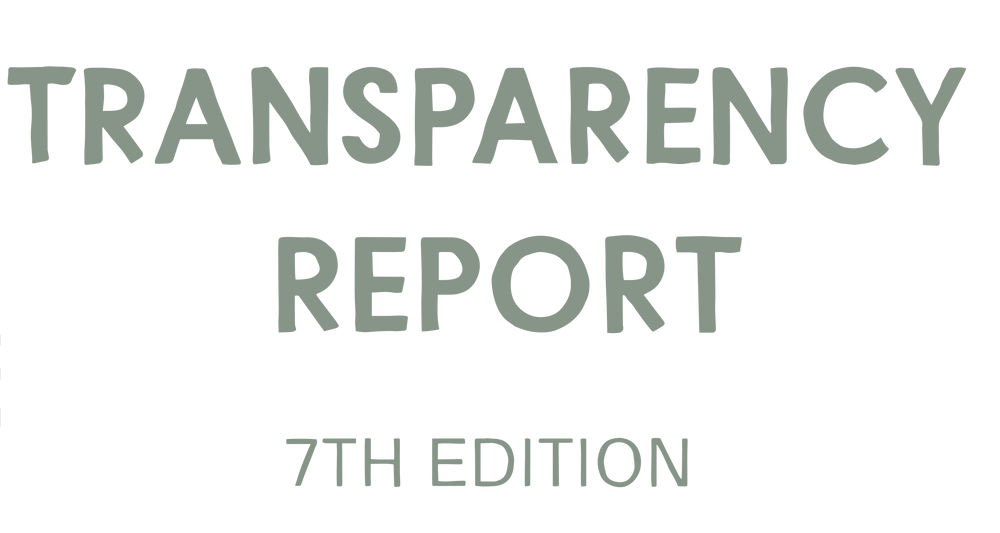Editorial

When sipping on a cappuccino, have you ever thought about how many hands have been involved in the journey of that cup of coffee?
It is a number that can be difficult to figure out. The coffee supply chain, like many others, is not always very transparent. In Coffee Collective we have thought a lot about the hands that take part in the process of transforming coffee beans from a cherry to a roasted bean. Every day we try to tell their stories, and make the coffee supply chain a bit more transparent.
From the farmer, planting coffee trees and waiting for years until it starts producing enough cherries to sustain the farmer. To the millers that process the green beans. All the way to our roasters and then baristas that with respect to the previous steps and people involved, carefully roast and brew great coffee experiences.
Coffee Collective was founded on the purpose of creating great coffee experiences while helping the farmers achieve more value. This encompasses paying for the quality of coffee and working as directly with the farmers as possible. To us transparency has a significant role in our purpose, and we believe it can support change in the coffee industry for the better.
In 2019 we signed the transparency pledge, in which we pledge to be transparent around the coffee we buy, including the amount of coffee we buy, the price we paid, the origin of the coffee, and the name of the farmer amongst other factors.
We hope that we can help bring fair payments to coffee producers, so that they can have a sustainable business and life. We hope that it can inspire others to pay the farmers for the quality and not according to the market price. We hope that it can show our guests what they support when they visit our shops.
In this year's Transparency report we will show you some of the things we worked with in 2023, what has been on our minds and why we were all covered in dirt one day on social media.
We will show you our transparency index of all the coffees we bought last year, as well as walk through other important numbers and indicators.
Collective Forest
A bus is slowly making its way out of Copenhagen, navigating through the last parts of the morning traffic. The smell of coffee and a buzzling chatter is filling the bus.
17 colleagues volunteered their time, put on an extra layer of warm clothes, and polished off their wellies. Ready to head to Vemmelev and 21 hectares of field. At the end of the day, the team in the bus will have planted around 4.000 trees and thus, have broken ground to what will become Collective Forest.
Collective Forest in Numbers
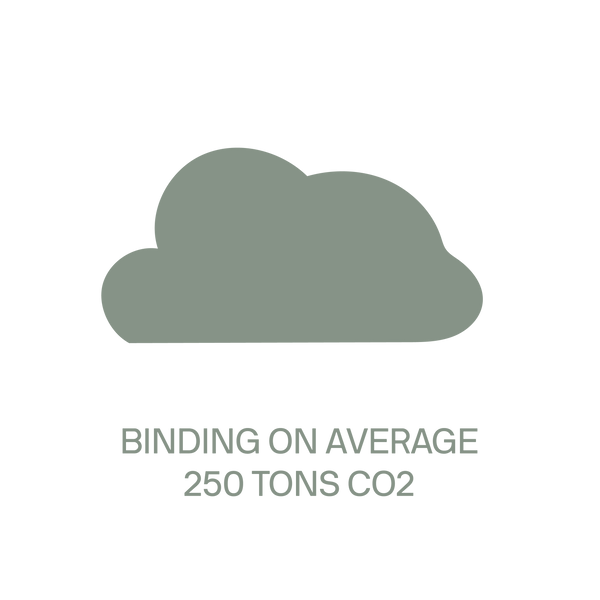
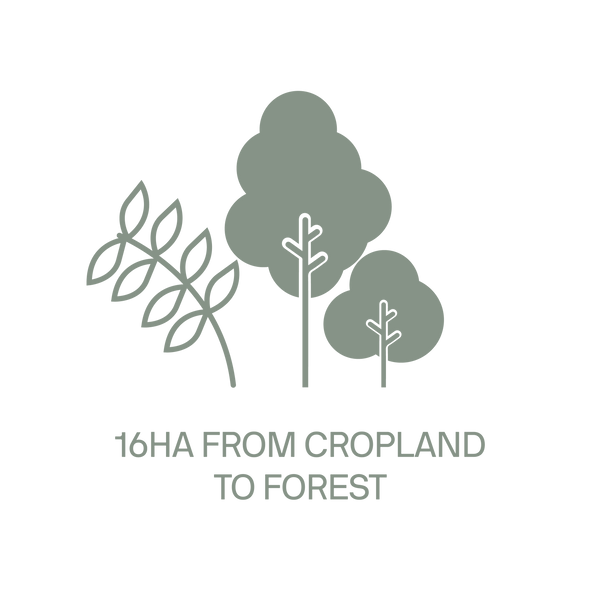

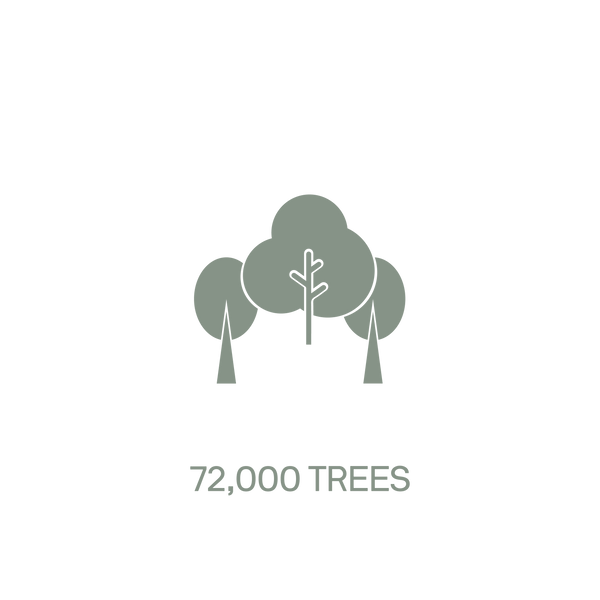

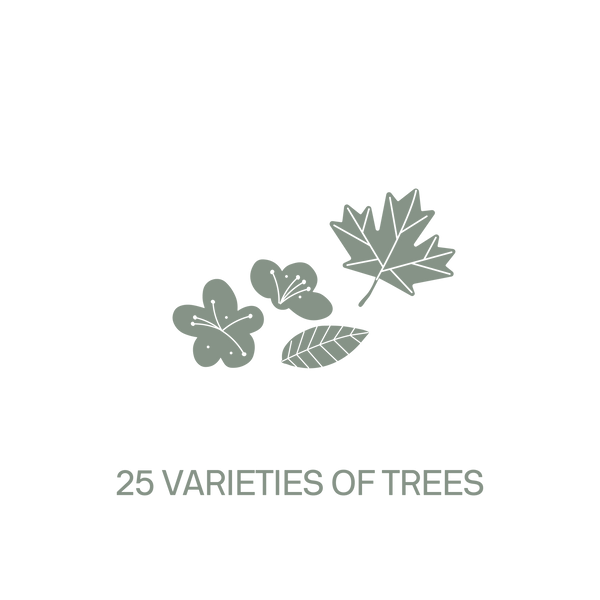
In Denmark 15% of the country is covered in forest, 85% of the forest is production forest, indicating that very little forest in Denmark is left untouched. Our main goal with Collective Forest is to be a part of the CO2 binding solution to climate change. On average the forest is going to bind 250 tons of CO2 yearly. Collective Forest is going to be managed as a “Naturnær” forest. Nature will mostly be allowed to take its course, but there will be human meddling, when necessary, in order to bind carbon in the best way possible.
Yearly Carbon sequestration (t CO2 eq /Ha/Year) | 0-10 years | 10-20 years | 20-30 years | 30-40 years | 40-100 years | Av. 0-100 years |
Forest edge | 3 | 6 | 18 | 19 | 14 | 13 |
Deciduous trees (low binding) | 3 | 6 | 18 | 19 | 14 | 13 |
Deciduous trees (medium binding) | 3 | 6 | 22 | 22 | 17 | 16 |
Coniferous trees (high binding) | 17 | 43 | 35 | 26 | 15 | 21 |
The entire forest (16,55 Ha) | 78 | 171 | 358 | 348 | 253 | 251 |
5 hectares of the land in Vemmelev, are already established forest. We work with the forest raising company Naturplant who had sent their good people to the planting day. One of them being Asger Hansen, forest warden and all-around a walking encyclopedia regarding anything forest and biodiversity. Asger took us on a biodiversity walk & talk through those 5 hectares.
A lot of us already knew that the biodiversity crisis is as critical as the climate crisis, but few of us knew what biodiversity actually entails.
What lingered the longest after our talk with Asger, was the fact that even in 5Ha in Vemmelev, invasive species of trees and plants were slowly taken over. Species that at some point in time were imported to Denmark, and they are interfering with the biodiversity.
When trees and plants are native to an area, a large number of species are connected to it. It takes hundreds of years for one new species to connect itself to a tree variety. Therefore, the newer to origin the tree types are, the less biodiversity.
After a day of fresh air and hard work the atmosphere in the bus is more mellow on the way back to Copenhagen. However, we all agreed that it brings a satisfying feeling to see the result of a day’s work as we pass the rows of trees we have just put into the ground. Working side by side has given us the opportunity to get to know our colleagues in a new way, and we all experienced the positive benefits that nature brings to you and your mind.
Biodiversity
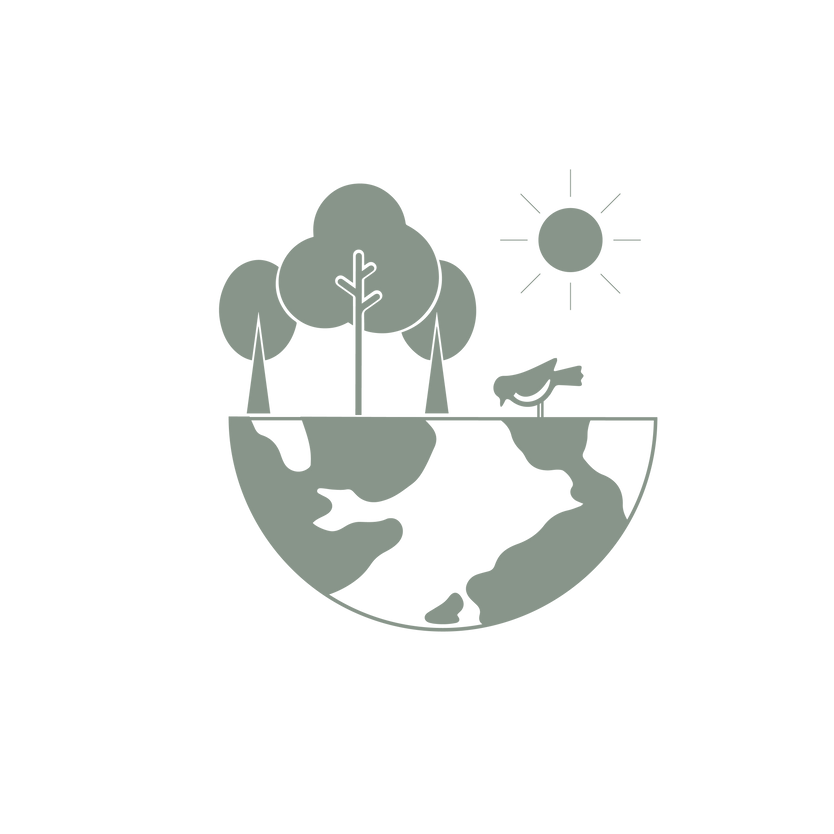
Biodiversity is the richness of life in all of the earth’s types of nature and habitats

Here larger varieties of insects, mammals, birds, plants, fungi, and bacteria all have a role in the ecosystem

Biodiversity contributes to food, medicine, and clean air & water amongst other things

Biodiversity creates resilience and mitigates natural disasters and diseases
Transparency Table
Farmer/Coffee¹ | Relationship (years) | Quantity bought (kg) | Return to OrigIn² (USD/lb FOB) | Market price³ (USD/lb) | Producer price⁴ (USD/lb) | SCA Quality Score⁵ |
Vista Hermosa Huehuetenango, Guatemala | 17 | 12.843 | 4,65 | 2,20 | Same as FOB | Excellent |
Daterra Cerrado, Brazil | 17 | 18.320 | 3,37 | 1,92 | Same as FOB | Good |
Kieni Nyeri, Kenya (AA + AB) | 13 | 15.182 | 5,38 | 2,38 | 4,86 | Outstanding + Excellent |
Jaime Huila, Colombia | 12 | 2.205 | 4,89 | 2,38 | 2,59 | Excellent |
Duver Rojas Huila, Colombia | 12 | 805 | 4,31 | 2,37 | 2,79 | Excellent |
Edilfonso Huila, Colombia | 12 | 420 | 4,57 | 2,38 | 2,61 | Excellent |
Desarollo Huila, Colombia | 12 | 6055 | 3,93 | 2,38 | 2,69 | Good |
Akmel Nuri Djimma, Ethiopia | 10 | 13.860 | 3,94 | 1,87 | Same as FOB | Good |
Takesi Yanacachi, Bolivia | 9 | 1.147 | 29,35 | 2,21 | Same as FOB | Outstanding |
Los Rodrigues Caravani, Bolivia | 8 | 3.000 | 6,07 | 1,69 | Same as FOB | Excellent |
Enciso Tolima, Colombia | 6 | 6.615 | 4,60 | 2,38 | 2,51 | Excellent |
Planadas Tolima, Colombia | 6 | 12.005 | 3,84 | 2,38 | 2,54 | Good |
Perez Tolima, Colombia | 3 | 1.015 | 4,60 | 2,38 | 2,30 | Excellent |
Kiangoi Kirinyaga, Kenya | 3 | 777 | 3,64 | 2,38 | 3,14 | Excellent |
Kii Kirinyaga, Kenya | 2 | 1.907 | 5,94 | 2,38 | 5,41 | Outstanding |
Montegrande Cajamarca, Peru | 2 | 14.007 | 1,93 | 2,35 | Good | |
Worka Yirgacheffe, Ethiopia | 1 | 9.600 | 4,40 | 2,22 | Same as FOB | Outstanding |
Sadi Loya Djimma, Ethiopia | 1 | 9.600 | 3,60 | 2,22 | Same as FOB | Excellent |
Karimikui Kirinyaga, Kenya | 1 | 1.826 | 5,94 | 2,38 | 5,41 | Outstanding |
Rosa Megu Cajamarca, Peru | 1 | 600 | 5,50 | 1,93 | 2,37 | Excellent |
Nolberto Caranavi, Bolivia | 1 | 700 | 4,30 | 2,40 | n/a | Excellent |
Vargas Huila, Colombia | 1 | 350 | 6,50 | 2,38 | 4,12 | Outstanding |
Efrain Cajamarca, Peru | 1 | 80 | 9,00 | 1,93 | 3,52 | Outstanding |
Total volume / weighted averages | 132.910 | 4,47 | 2,16 |
¹ The table presents 100% of Coffee Collectives purchases in 2023
² When buying green coffee from an exporter, we pay a Free On Board price. When a farmer is also the exporter, the producer price and return to origin prices are the same
³ The "Market price” we refer to is the average price for the month the contract was made with the producer, from the International Coffee Organizations statistics of prices for real coffee sold. See icocoffee.org
⁴ Amount received by coffee producer/cooperative, without export expenses
⁵ SCA quality score: Good (80-84,99) Excellent (85-89,99) Outstanding (90-100)
Some of the smallholders in Peru and Colombia has received an extra payment later, which is not included here due to lack of documentation at time of publishing.
We have in 2023 bought 133 tons of green coffee compared til 135 tons in 2022. We expect to increase purchases again in 2024.
The average Return to Origin was 4,47 USD/lb in 2023 against 5,16 USD/lb in 2022.
Four main reasons for this are:
1) A few lower prices paid due to lower quality than the year before,
2) New relationships in Ethiopia starting at modest prices,
3) a wholesale market demanding cheaper coffees,
4) to some extent related to the fact that comparable market prices have decreased from 2,62 USD/lb in 2022 to 2,16 USD/lb in 2023
Stories from Origin
-Jaime Casallas

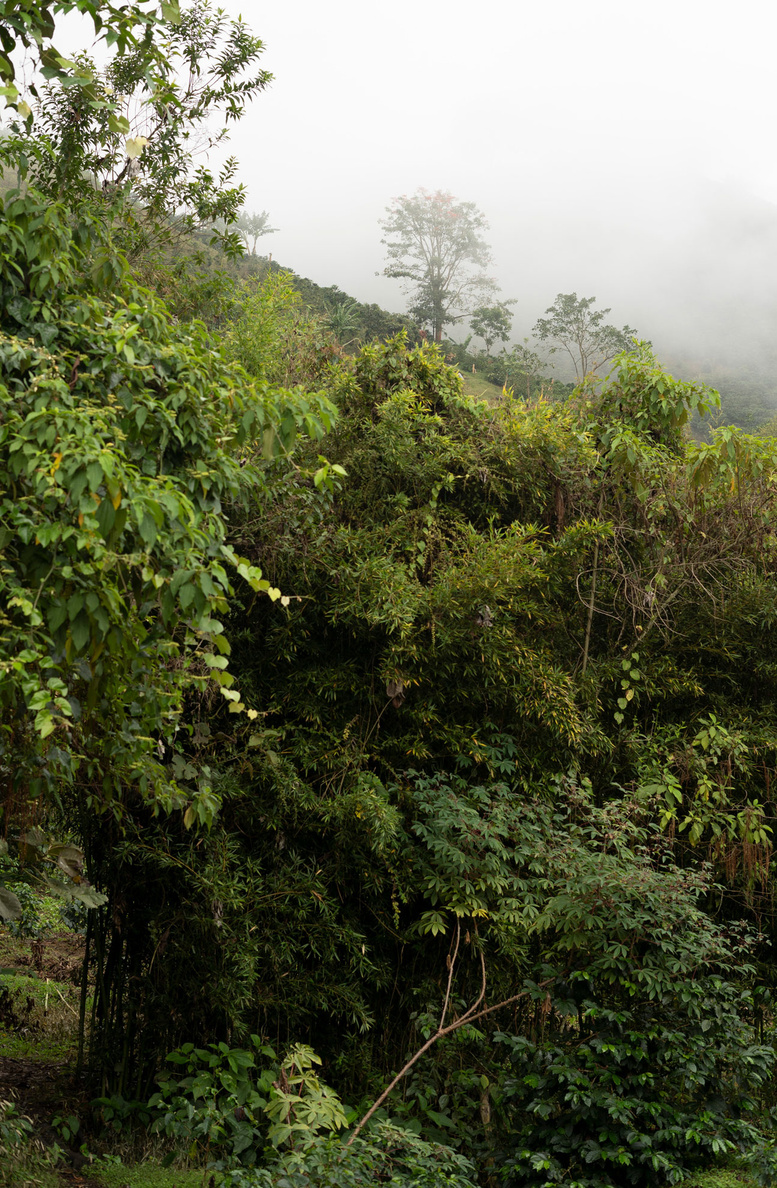


Timeline
Since 2013 we have worked systematically on reducing our negative environmental footprint and increasing our social sustainability. Back then we got a hold of a life cycle analysis showing that 40% of the CO2 emissions behind a cup of coffee comes from the brewing. To take responsibility for this, we looked into how we can reduce this in Coffee Collective. We realized that most of the emissions came from the heating of water and to a smaller extent the grinding of coffee. In Coffee Collective both are powered by electricity. Therefore, we started buying shares in windmills to produce the same amount of electricity on windmills as we used in our locations. We later switched supplier of electricity to one who basically does the same for us.
Here is a timeline from different initiatives we have taken over the years to reduce our negative impact on the environment.


2007
Coffee Collective started with the purpose of creating great coffee experiences while achieving more value for the farmers.
Direct trade with Finca Vista Hermosa and Daterra Coffee.
2011
Coffee Bags without metal and made of Polyethylene to incinerate in the cleanest possible way.

2013
Shares in windmill park and Price Transparency
2014
Our Plot at Daterra started as a project to explore how to grow specialty coffee in a more sustainable way in the Cerrado region of Brazil. With attention to increasing biodiversity and not using fossil-fuel based chemicals.
2015
Adjoining Union agreement for all baristas.

2016
Making all single-use to-go cups out of plant-based materials, making them industrial compostable.
Introducing a circular to-go cup option for our guests.
2018
Publishing first public Sustainability Report.
2019
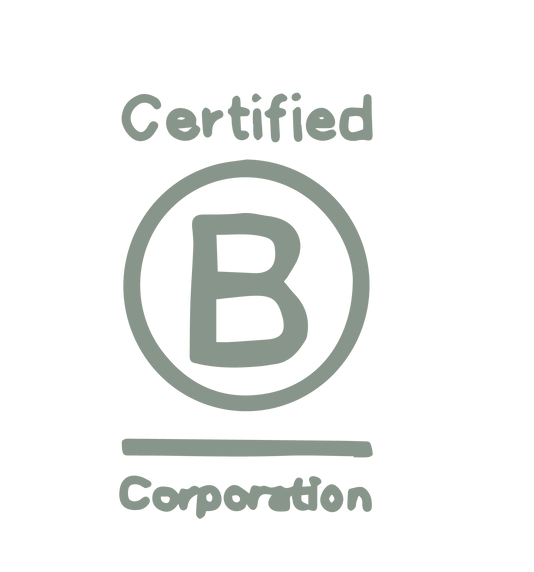
B Corp certified,
Transparency Pledge.
2020
Improving waste management to re-cycle more waste.
2021
Fully re-cyclable coffee bags based on 50% re-cycled plastic.
Planting our own Climate- and biodiversity forest in Denmark as a Climate Justice initiative.
2022
2023
2024
Implementing a circular bean container for distribution to our own shops and their own espresso use.
Starting up our new Supplier code of Conduct. Working with the coffee farmers from a Climate Justice perspective, building sustainability on national legislation and international regulation in ways similar to the later EU anti-deforestation regulation.

Testing new Circular packaging systems as Circular to-go cups and circular bean containers.
Expanding our Supplier code of Conduct to match the EU anti-deforestation regulation.
Expanding our Transparency reporting to match the recommendations for SMV’s to the coming EU CSR reporting regulation.
Developing Climate KPI’s to assist our future environmental impact management.
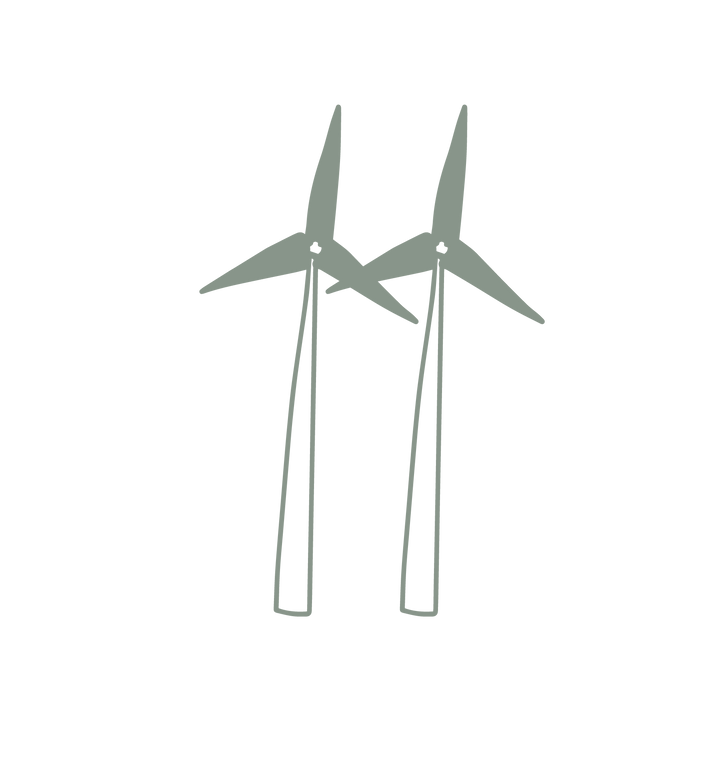


Climate
Justice
Coffee is a daily need and pleasure for many of us. It is also a direct link between us in the consuming end of the coffee value chain, and the people living in some of the poorest regions of the world, who work in the coffee supply chain. Moreover, the history of coffee is undeniably intertwined with colonial history.
These facts have always been a core part of our understanding of coffee in Coffee Collective.
When we look at the climate crisis and where it will affect the most, it becomes clear that there are dynamics that are comparable to the coffee industry as well as colonial history.
The main reasons for the climate crisis are the historic deforestation and fossil-fuel-based development in the Global North. The main challenges of climate change are found in the poorest regions of the world. (often in the Global South).
In the value chain of coffee, we see similar mechanisms. There is a significant overlap between the coffee-consuming countries and the countries who have had a development negatively affecting the climate problems. While the coffee farmers already for several years have been struggling with consequences of the climate changes, as higher temperatures and changing rain patterns influence their harvest.
As such we believe that it is very important that we in the coffee industry and value chain talk about Climate Justice - It should be the ones who have created the climate crisis who also carry the burdens of solving it.
Unfortunately, we see that the opposite is happening.
While coffee farmers have already carried the burdens of the changing climate for years, most “Climate Action” we see from our side of the world is aimed at lowering emissions at the primary production of coffee - coffee farming. Lowering emissions in itself is good, but seen in a broader picture it is limiting the farmers' possibilities and thereby, putting an extra burden on them.
Several studies of the CO2 emission behind a cup of coffee show that the two primary hot spots of emission are Primary Production (Mainly fertilization, but also deforestation) and brewing (mainly heating water, but also grinding). It is roughly the same amount of emissions from both steps, around 40%.
We see very few attempts in the coffee industry aimed at lowering emissions from the consumption side, and we suspect that it might be partly due to it being easier and cheaper to put demands on the coffee farmers, than to put demands on the coffee consumers.
Hereby, it reflects the unequal power structures of the coffee industry and supply chain.
It can be argued to be a great model for coffee businesses in the consumption end to continue the exploitation of coffee farmers, to keep paying low prices for coffee while investing back limited parts of the surplus in “climate projects”. Farmers will be kept in poverty and dependent on the coffee buyers and at the same time cheap coffee can be sold to the consumers requesting “Sustainable Coffee” with low to positive climate impact. All done with low risk since the investments can always be scaled down depending on the surplus created in the business, by buying coffee for cheap and selling it at a high price as for example “sustainable”.
In Coffee Collective we try to embrace Climate Justice, by putting the biggest burdens on ourselves, while keeping a dialogue with the farmers on possibilities for reducing their emissions. We continue our work to increase the payments to the farmers, which we also believe is both making it more possible for them to adjust to climate changes, but also has a positive effect on the climate.
The positive effects of higher payments are also endorsed by the EU in their new Anti-deforestation regulation, where they encourage everyone to ensure better prices are paid to farmers, “to enable a living income and effectively address poverty as a root cause of deforestation”.
In 2013 we started buying shares in windmills and later joined Vindstød as supplier of electricity, to make sure all electricity we use is produced on windmills. Thereby, lowering the emissions of coffee enjoyed in our shops significantly.
As you can see in other parts of this report, we have also worked on several other projects to reduce the emissions from our activities.
In 2023 we started to bind CO2 by raising a forest here in Denmark. It will of course limit land use for food production, but from a climate justice perspective we believe that we need to carry that burden here in Denmark instead of forcing the coffee farmers to limit their possibilities to bind CO2 that we have emitted.
We will continue our work taking on climate action, but always with a view on the Climate Justice perspective.
While we are working on our strategies to reduce our own emissions (Scope 1 +2), we will not force the farmers to do so. Instead, we will keep a focus in our dialogue with them about how to lower emissions and share knowledge from other producers on how they do.
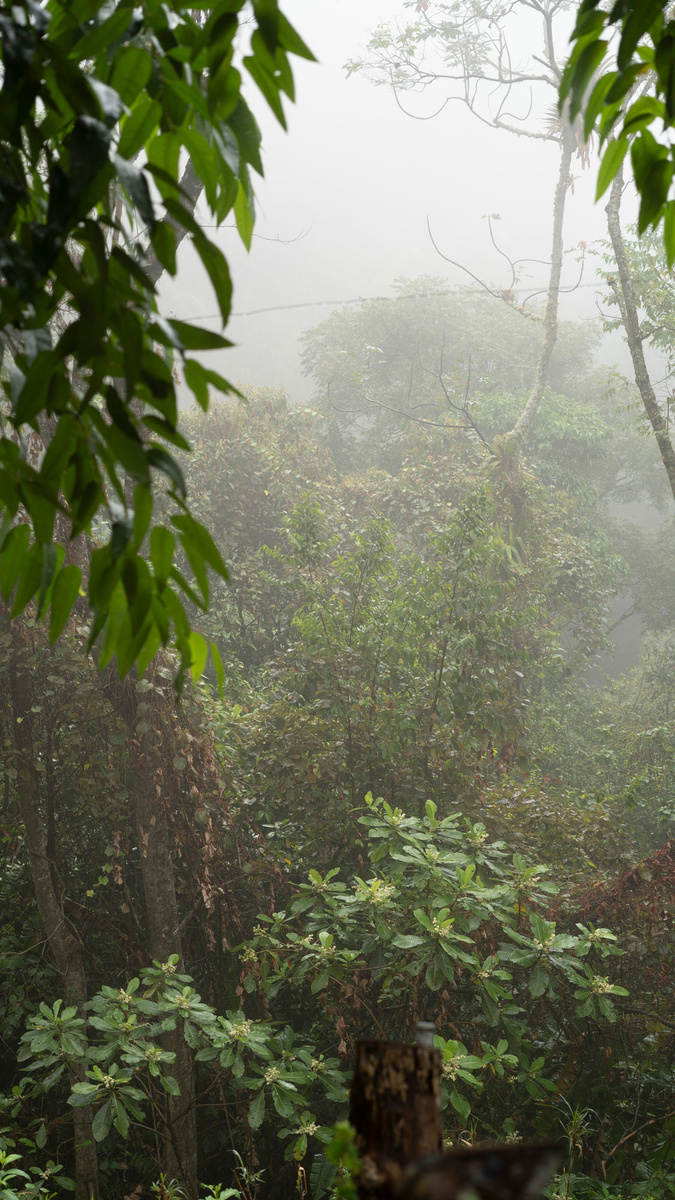
These articles are suggested for reading more about emission behind a cup of coffee:
Carbon and water footprint of coffee consumed in Finland—life cycle assessment Kirsi Usva1 & Taija Sinkko2 & Frans Silvenius2 & Inkeri Riipi2 & Hannele Heusala2 Received: 4 March 2020 /Accep. The International Journal of Life Cycle Assessment (2020) 25
Journal of Agricultural Science and Technology B 3 (2013) 151-170 Earlier title: Journal of Agricultural Science and Technology, ISSN 1939-1250 Carbon Footprint across the Coffee Supply Chain: The Case of Costa Rican Coffee Bernard Killian1, 2, Lloyd Rivera2 , Melissa Soto3 and David Navichoc2 1. INCAE Business School, La Garita, Alajuela 960-4050, Costa Rica 2. Sustainable Markets Intelligence Center (CIMS), INCAE, La Garita, Alajuela 960-4050, Costa Rica 3. External Consultant, Alajuela, INCAE, La Garita, Alajuel 960-4050a, Costa Rica).

Every year, we try to be transparent about as much data as possible. In this Transparency report, we have expanded the data that we report to include numbers that matches the Danish Business Authority’s recommendations to SMEs, that follow the coming EU Corporate Sustainability Reporting Directive (CSRD)
ENVIRONMENTAL TABLES
Electricity in KWH | 2019 | 2020 | 2021 | 2022 | 2023 |
Godthåbsvej | 54.878 | 57.664 | 64.793 | 78.243 | 78.049 |
Jægersborggade | 28.352 | 25.296 | 25.501 | 28.254 | 29.689 |
Kristen Bernikows Gade | 23.194 | 20.442 | 19.784 | 22.118 | 22.346 |
Booth in Torvehallerne | 20.583 | 24.020 | n/a | 27.500 | 27.791 |
Warehouse at Esromgade | 1.783 | 2.097 | 3.412 | 1.912 | 705 |
Sankt Hans Torv | - | 6.501 | 22.338 | 18.528 | 16.313 |
Telefon Kiosken | - | 4.090 | 9.577 | 9.676 | 7.917 |
Collective Bakery | - | - | 112.921 | 175.648 | 171.609 |
Carlsberg Byen | - | - | - | 4.242 | 17.750 |
Guldsmedegade | - | - | - | - | - |
GHG
EMISSIONS
GHG emissions is extensive to gather, therefore, we do not do it yearly. However, we felt it important to show the most recent numbers.
2018 calculation method is not the same as the method used in 2022.
Numbers are "market based".
In 2018 an green coffee emissions factor of 1,66 kg CO2e/ KG green coffee was used, where as the consultants in 2022 used an emission factor of 6 kg CO2e/Kg green coffee).
Using the high emission factor for 2018 would give a scope 3 emission of 828 ton CO2e, a total emission of 851 and a CO2 intensity of 0,024
GHG emissions (ton CO2e) | 2018 | 2022 |
Scope 1 | 12 | 17 |
Scope 2 | 11 | 0,3 |
Scope 3 | 471 | 1.037 |
Total | 494 | 1.054 |
CO2 intensitet (kg CO2e/Omsat kr.) | 0,014 | 0,016 |
ENERGY
INTENSITY
ENERGY INTENSITY (KWH) | ||
Electricity | 372.169 | |
Fuel - benzin | 345,61 | |
Fuel - diesel | 2.372,73 | |
Gas - propane | 1.850,19 | |
Total | 376.737,53 (KWH) | |
Energy Intensity: 0,46kWh / per 100DKK earned | ||
COFFEE
PURCHASE
2019 | 2020 | 2021 | 2022 | 2023 | |
Total coffee purchase (kg) | 100.162 | 95.038 | 90.008 | 135.138 | 132.910 |
Organic Certified Coffee (%) | 25,3 | 45,2 | 35 | 46 | 36 |
Weighted avg. FOB price (USD/lb) | 4,41 | 4,65 | 4,85 | 5,16 | 4,47 |
Total roasted coffee sold (tons) | 80 | 79 | 96 | 105 | 109 |
*Counting coffees arrived in our possesion in EU in the calendar year. | |||||
SOCIAL
INDICATORS
2018 | 2019 | 2020 | 2021 | 2022 | 2023 | |
Number of full time union employees | 38 | 39 | 33 | 49 | 65 | 76 |
Number of different nationalities | 10 | 14 | 15 | 19 | 25 | 21 |
Female employees (%) | 48 | 49 | 43 | 52 | 55,6 | 55 |
Female salaries compared to male salaries in "white collar" positions (%) | -2 | 2,07 | 0,2 | 0,87 | -4,86 | -11,39 |
Employee satisfaction (1-5) | 4,54 | 4,52 | 4,37 | 4,38 | ||
Employee trust towards CC as an employer (1-5) | 4,68 | 4,66 | 4,41 | 4,33 | ||
Work accidents | 2 | |||||
Sickness absence | 4,1% | |||||
Employee turnover | 30% | |||||
Female managers | 52% | |||||
Female boardmembers | 17% | |||||
Wage difference between CEO and employees (CEO compensation/Median emplopyee wage) | +191% | |||||
Baristas wages are regulated by the relevant union agreement between 3F and Horesta. Therefore there are equal wage to all no matter their gender. | ||||||
*Disclaimer: Female and male identification are based on cpr. numbers. We acknowledge that this is not exhaustive, but it based on the data we have acces to. And on our respect for peoples privacy in terms of personal gender identity. | ||||||
From this year our APV data (including employee satisfaction and trust) are gathered in ways to be able to go in on the department level to investigate possibilities for improvement. | ||||||


